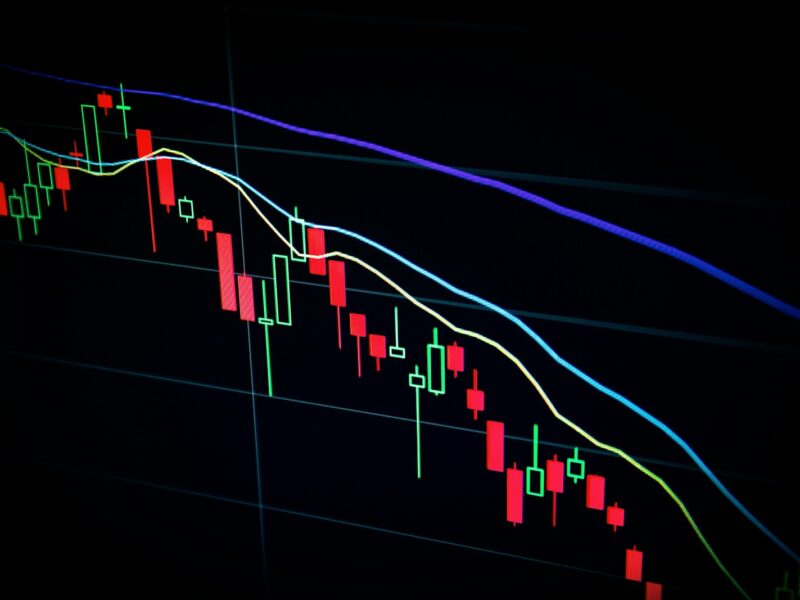Algorithmic trading uses automated programs to make high-speed trading decisions. A computer can follow a set of predefined rules – or an algorithm – to decide when, what, and how much to trade over time, and then execute those trades automatically.
Using an algorithm helps you make trades at the best possible price, time them correctly, reduce manual errors, and avoid psychological mistakes. It makes trades for you, so you don’t have to monitor market swings, manually research stocks, or put orders in by hand.
That makes it much easier to conduct trades thousands of times per minute, which is why so many massive hedge funds use automation to help them optimize their returns. Algorithmic (or “black box”) trading does have a higher barrier to entry than other investing strategies. After all, computerized decisions will only be as good as the rule you design and the data available to make those decisions. We highlighted some of the best algo trading books to help you get started.
How can I get started with algorithmic trading?
To get started, you’ll at a minimum need basic programming knowledge, computing power, access to market and historical data, and the IT infrastructure to test your algorithm on the market before you start using it to trade with actual money.
However, even if you don’t have a lot of math or programming experience, books on algorithmic trading by successful investors can help you skip some of the learning curve and get started with algo-trading faster and more successfully. The best books provide both theory and process-based information to give you both a solid background foundation and practical strategies.
Here’s a review of some of the top algorithmic trading books and manuals to help jumpstart your quantitative investing strategy:
The Ultimate Algorithmic Trading System Toolbox
The Algorithmic Trading System Toolbook is somewhere between a textbook and a technical manual. It contains useful, updated, and accurate information, and is accompanied by a website which offers source code to support the text. Keep in mind that its not light reading, but it is designed to be accessible to “non-quants,” or people without a significant coding or math background.
The beginning of the book covers methods to put a trading algorithm into pseudocode, with an emphasis on explaining your trading system logically. The real selling point, however, is its overview of a wide variety of languages, including AmiBroker, Excel, and Python.
Almost half of the book is dedicated to this overview; the number of languages included is extensive, but this breadth means that the author sacrifices a little depth. The back-testing portion of the book, for example, contains much less in-depth information. It’s easy to download the code from the accompanying website, but hard to tell what specific pieces of that code does, as its specific function isn’t clearly broken down.
This book is likely inaccessible for beginners and not quite detailed enough for experienced coders. But for intermediate algorithmic traders, the multiple languages covered make it more than worth its price.
Building Winning Algorithmic Trading Systems
This book is much closer to a memoir than a textbook. The author begins with a short series of personal narratives detailing his experience and personal trading philosophy. The remainder of the book is a practical step-by-step breakdown of algorithmic testing systems.
The title is somewhat misleading; this book focuses on testing, not building algorithms for trading. It’s short on practical implementation and building information, but even though it’s not billed as a manual on testing, that part of the book is actually very helpful.
This is also one of the few and valuable books written by someone who actively makes a living from stock trading, yet can still describe strategies accessibly and intelligibly. Due to its readability and wealth of testing information, this is another title great for people who already have ideas about algorithmic trading strategies, but who want to learn in-depth methods to test their code.
Algorithmic Trading: Winning Strategies and Their Rationale
Algorithmic Trading focuses on the why behind particular algorithmic strategies instead of the how. Instead of implementation, the author focuses on the reasons why some strategies work, and then on how to refine them given mathematical proofs and theories about how markets work.
He includes a number of test cases, even including descriptions of where his own strategies have failed. All of the information in the book are remarkably factual and well supported. The book discusses reversion and momentum strategies, testing, improvement, and strategy.
The writing style is fairly readable, but Chan’s book is the most math-intensive on this list. All examples are in MATLAB (though this can fairly easily be converted to R or another language if you have some programming knowledge). You’ll get the most out of this book if you already have familiarity with time series analysis, linear algebra, and intermediate statistics. If you’ve read Chan’s other book, you’ll likely find a lot of repeat information.
However, this book is, overall, a comprehensive, reputable, and practical manual particularly well suited to those who might have a math background, but not a trading background.
Algorithmic Trading and DMA: An introduction to direct access trading strategies
This is one of the most comprehensive overviews of trading and direct market access (DMA). It’s over 550 pages long and full of detailed diagrams. It’s also intended to be more of a textbook, than a novel – don’t expect to sit down and read it cover to cover, but do expect to find in-depth discussions of many of the fundamentals of algorithmic trading.
Some parts are a little wordy, or, strangely, not detailed enough; the author again tends towards breadth rather than depth. The focus is also on institutional investors such as those working for banks or as brokers. For example, there is extensive discussion of how those with huge accounts can influence the market with large orders; this and some other sections are likely not relevant to every potential algorithmic trader.
However, it’s still useful for retail investors interested in learning more about quantitative trading. This is a great book to reference and have on your shelf, regardless of how involved you are in algorithmic trading.
Inside the Black Box: A Simple Guide to Quantitative and High Frequency Trading
Inside the Black Box is designed to provide an insider’s view of how professional hedge funds operate. The author provides an in-depth breakdown of quantitative investing for a wider audience than most of the other books on the market, and provides ideas on what else to study beyond the text.
Narang slowly peels back the layers of strategy, starting simply and getting more complex – and more interesting the deeper he digs into “the black box” of algorithmic trading. The book covers a wide variety of topics, from machine learning and data cleansing to finance theory, market history, and fund selection.
It’s a little short on immediately actionable advice, and again focused on professional quantitative funds, but it gives a great general overview of what systems-based traders do even for retail investors. Especially when combined with books like Chan’s or others, this text is a great way to familiarize yourself with quantitative trading and give you multiple avenues for further study.
Closing Thoughts
Algorithmic trading is often more efficient and effective than trading by hand. It’s also often intimidating, especially for less naturally quantitative investors.
No matter who you are, learning the strategy and theory behind quantitative trading is a great place to start. Even without extensive practical experience, learning about microstructure, and algorithm testing, will help even casual retail investors better understand the market.
The books on this list provide a great springboard for algorithmic traders, as well as a rare and valuable insider’s look into how professionals think about the ins and outs of quant trading strategies.


